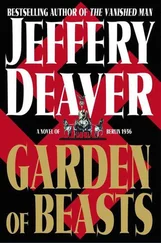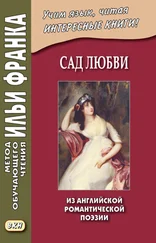Hanfstaengl picked her up in his huge car and drove to the Kaiserhof, seven blocks away on Wilhelmplatz, just off the southeast corner of the Tiergarten. A grand hotel with a cavernous lobby and arched entrance portico, the Kaiserhof had been Hitler’s home until his ascension to chancellor. Now Hitler often had lunch or tea in the hotel surrounded by his Chauffeureska.
Hanfstaengl had arranged that he and Martha would be joined for lunch by another party, a Polish tenor, Jan Kiepura, thirty-one years old. Hanfstaengl, well known and unmistakable, was treated with deference by the restaurant’s staff. Once seated, Martha and the two men chatted over tea and waited. In time a commotion arose at the entrance to the dining room, and soon came the inevitable rumble of chairs shoved back and shouts of “Heil Hitler.”
Hitler and his party—including, indeed, his chauffeur—took seats at an adjacent table. First, Kiepura was ushered to Hitler’s side. The two spoke about music. Hitler seemed unaware that Kiepura under Nazi law was classified as Jewish, by maternal heritage. A few moments later Hanfstaengl came over and bent low to Hitler’s ear. He barreled back to Martha with the news that Hitler would now see her.
She walked to Hitler’s table and stood there a moment as Hitler rose to greet her. He took her hand and kissed it and spoke a few quiet words in German. She got a close look at him now: “a weak, soft face, with pouches under the eyes, full lips and very little bony facial structure.” At this vantage, she wrote, the mustache “didn’t seem as ridiculous as it appeared in pictures—in fact, I scarcely noticed it.” What she did notice were his eyes. She had heard elsewhere that there was something piercing and intense about his gaze, and now, immediately, she understood. “Hitler’s eyes,” she wrote, “were startling and unforgettable—they seemed pale blue in color, were intense, unwavering, hypnotic.”
Yet his manner was gentle—“excessively gentle,” she wrote—more that of a shy teenager than an iron dictator. “Unobtrusive, communicative, informal, he had a certain quiet charm, almost a tenderness of speech and glance,” she wrote.
Hitler now turned back to the tenor and with what seemed to be real interest rekindled their conversation about music.
He “seemed modest, middle class, rather dull and self-conscious—yet with this strange tenderness and appealing helplessness,” Martha wrote. “It was hard to believe that this man was one of the most powerful men in Europe.”
Martha and Hitler shook hands once again, and for the second time he kissed hers. She returned to her table and to Hanfstaengl.
They remained a while longer, over tea, eavesdropping on the continuing conversation between Kiepura and Hitler. Now and then Hitler would look her way, with what she judged to be “curious, embarrassed stares.”
That night, over dinner, she told her parents all about the day’s encounter and how charming and peaceful the Führer had been. Dodd was amused and conceded “that Hitler was not an unattractive man personally.”
He teased Martha and told her to be sure to take note of exactly where Hitler’s lips had touched her hand, and he recommended that if she “must” wash that hand, that she do so with care and only around the margins of the kiss.
She wrote, “I was a little angry and peeved.”
Martha and Hitler never repeated their encounter, nor had she seriously expected they would, though as would become clear some years later, Martha did enter Hitler’s mind on at least one more occasion. For her part, all she had wanted was to meet the man and satisfy her own curiosity. There were other men in her circle whom she found infinitely more compelling.
One of these had come back into her life, with an invitation for a most unusual date. By the end of October, Rudolf Diels had returned to Berlin and to his old post as chief of the Gestapo, paradoxically with even more power than before his exile to Czechoslovakia. Himmler had not only apologized for the raid on Diels’s home; he had promised to make Diels a Standartenführer , or colonel, in the SS.
Diels sent him a fawning thank-you: “By promoting me to the Obersturmbannführer der SS , you have brought so much joy to me that it cannot be expressed in these short words of thanks.”
Safe at least for the time being, Diels invited Martha to attend an upcoming session of the Reichstag arson trial, which had been under way in the Supreme Court in Leipzig for nearly a month but was about to reconvene in Berlin, at the scene of the crime. The trial was supposed to have been a short one and to conclude with convictions and, ideally, death sentences for all five defendants, but it was not proceeding as Hitler had hoped.
Now a special “witness” was scheduled to appear.
CHAPTER 21
The Trouble with George
With in Germany, a great flywheel had been set in motion that drove the country inexorably toward some dark place alien to Dodd’s recollection of the old Germany he had known as a student. As the autumn advanced and color filled the Tiergarten, he came more and more to realize just how correct he had been back in Chicago, in the spring, when he had observed that his temperament was ill suited to “high diplomacy” and playing the liar on bended knee. He wanted to have an effect: to awaken Germany to the dangers of its current path and to nudge Hitler’s government onto a more humane and rational course. He was fast realizing, however, that he possessed little power to do so. Especially strange to him was the Nazi fixation on racial purity. A draft of a new penal code had begun to circulate that proposed to make it a key buttress of German law. The American vice consul in Leipzig, Henry Leverich, found the draft an extraordinary document and wrote an analysis: “For the first time, therefore, in German legal history the draft code contains definite suggestions for protection of the German Race from what is considered the disintegration caused by an intermixture of Jewish and colored blood.” If the code became law—and he had no doubt it would—then henceforth “it shall be considered as a crime for a gentile man or woman to marry a Jewish or colored man or woman.” He noted also that the code made paramount the protection of the family and thus outlawed abortion, with the exception that a court could authorize the procedure when the expected offspring was a mix of German and Jewish or colored blood. Vice Consul Leverich wrote, “Judging from newspaper comment, this portion of the draft will almost certainly be transacted into law.”
Another newly proposed law caught Dodd’s particular attention—a law “to permit killing incurables,” as he described it in a memorandum to the State Department dated October 26, 1933. Seriously ill patients could ask to be euthanized, but if unable to make the request, their families could do so for them. This proposal, “together with legislation already enacted governing the sterilization of persons affected by hereditary imbecility and other similar defects, is in line with Hitler’s aim to raise the physical standard of the German people,” Dodd wrote. “According to Nazi philosophy only Germans who are physically fit belong in the Third Reich, and they are the ones who are expected to raise large families.”
Attacks against Americans continued, despite Dodd’s protests, and the prosecution of past cases seemed languid at best. On November 8 Dodd received notice from the German foreign office that no arrest would be made in the assault on H. V. Kaltenborn’s son, because the senior Kaltenborn “could remember neither the name nor the number of the Party identification card of the culprit, and as no other clues which might be useful in the investigation could be found.”
Читать дальше












